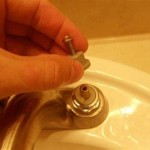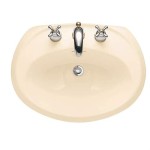How Do You Get Brown Stains Out of Bathroom Sink Drain?
Brown stains in your bathroom sink drain can be unsightly and may even suggest underlying plumbing issues. The most common culprits behind these stains are mineral deposits like iron, manganese, and calcium, which accumulate over time. Fortunately, there are several effective methods to remove these stains and restore your sink drain to its former glory. This article will explore some of the most widely used techniques to combat these stubborn stains.
Understanding the Source of Brown Stains
Before diving into stain removal, it's crucial to understand the source of the brown discoloration. While mineral buildup is often the primary culprit, there are other potential causes:
- Hard Water: Hard water is rich in minerals like calcium and magnesium, which can leave behind unsightly stains.
- Rust: If your plumbing system contains iron pipes, rust can accumulate and lead to brown stains.
- Mold and Mildew: In humid environments, mold and mildew can grow in the drain, contributing to discoloration.
- Organic Matter: Hair, soap residue, and other organic debris can decompose and cause a brown tint.
Identifying the root cause will guide your cleaning approach and help prevent future staining.
Proven Methods for Removing Brown Stains
Several effective methods can be employed to remove brown stains from bathroom sink drains, ranging from readily available household ingredients to specialized cleaners.
1. Vinegar and Baking Soda
This classic combination is a powerful natural cleaning agent. The acidic vinegar dissolves mineral deposits, while the baking soda acts as an abrasive to loosen stubborn stains.
- Pour 1 cup of white vinegar into the drain and allow it to sit for 30 minutes.
- After 30 minutes, pour 1 cup of baking soda down the drain and let it fizz for another 15 minutes.
- Flush the drain with hot water to rinse away the residue.
2. Citric Acid
Citric acid, found in lemon juice and commercial cleaners, is another excellent mineral deposit remover.
- Pour 1 cup of lemon juice or a solution of citric acid powder mixed with water down the drain.
- Let it sit for 30 minutes to an hour.
- Flush with hot water to rinse.
3. Commercial Drain Cleaners
For stubborn stains, commercial drain cleaners can be a more aggressive solution. However, it's crucial to use these products with caution and always follow the manufacturer's instructions.
- Pour the drain cleaner into the drain as directed.
- Allow it to sit for the recommended time.
- Flush the drain with hot water to rinse.
Remember that excessive use of strong chemicals can damage your plumbing.
4. Bleach
Bleach can be effective in removing stains caused by mold, mildew, and organic matter. However, it should only be used with caution, as it is a harsh chemical.
- Pour 1/2 cup of bleach into the drain.
- Let it sit for 30 minutes.
- Flush with hot water to rinse thoroughly.
Preventive Measures
While stain removal is essential, preventing future stains is equally important. Consider these preventative measures:
- Install a water softener: If hard water is the culprit, a water softener helps remove minerals from the water supply, minimizing mineral buildup.
- Flush drains regularly: Flushing drains with hot water helps prevent the accumulation of hair, soap residue, and other debris.
- Use a drain strainer: A drain strainer catches hair and other debris, reducing the amount of organic matter that can decompose and cause discoloration.
- Keep pipes clean: Regularly cleaning your pipes can help prevent the buildup of mineral deposits and rust.
By adopting these preventive measures, you can keep your bathroom sink drains looking pristine and prevent the frustration of dealing with stubborn brown stains in the future.

How Do I Remove This Embedded Stain From Bathroom Sink Hometalk

How To Get Rid Of Iron And Rust Stains Once For All Water Right

What Are The Reddish Brown Stains In My Sink Tub And Toilet Advanced Water Softening

The Drain In My Vanity Is Discolored Does Any Know What I Can Hometalk

How Do I Remove This Embedded Stain From Bathroom Sink Hometalk

How To Remove Stains From A Porcelain Sink Isavea2z Com

What Are The Reddish Brown Stains In My Sink Tub And Toilet Advanced Water Softening

How To Remove Rust Stains From Sink Tub Mr Handyman

Here S How To Remove Rust Stains From Your Bathroom

How To Remove Brown Spots From White Sinks Pro Cleaning Tips
Related Posts







